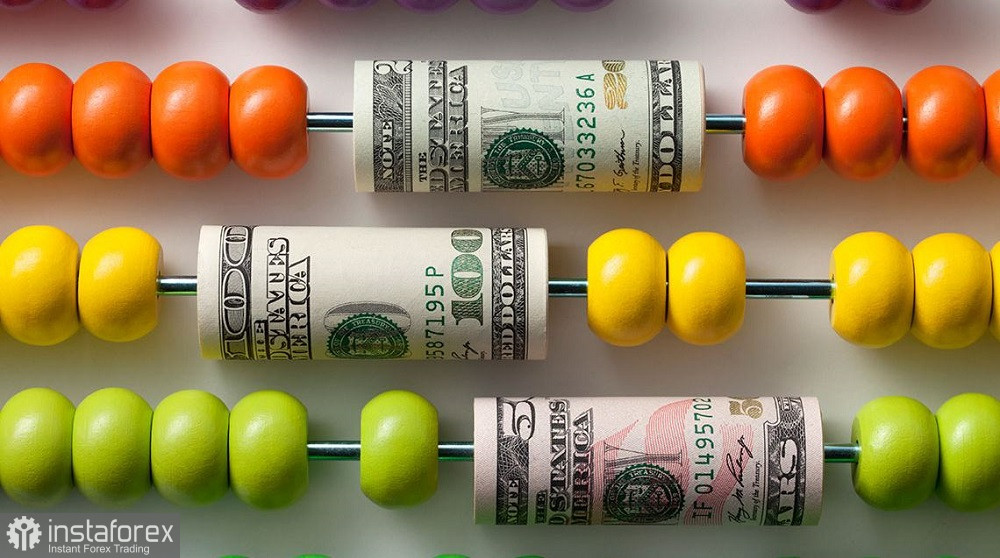Today, EUR/USD bears passed 100 points, ending up at the base of the second figure. The euro has weakened considerably while the dollar has significantly strengthened. Several fundamental factors are exerting pressure on the pair, and not only of economic, but also of political nature.
Firstly, traders reacted to the rhetoric of the chief economist of the European Central Bank, Philip Lane, who sounded dovish. In an interview with Britain's MNI, Lane said that as early as the December meeting, the increases on the interest rates may well be smaller than the most recent ones. He basically made it clear that the period of 75-point hikes is over. Take note that this is not the first signal of this kind. Three weeks ago, Mario Centeno, a member of the central bank's Governing Council, said that the regulator had "already completed a large part of the necessary rate hikes to contain inflation in the eurozone. Prior to that (in September), ECB President Christine Lagarde outlined the time frame for the process of tightening the monetary policy – according to her, the central bank will raise rates at several meetings – "from two to five".
Of course, it's too early to talk about the end of the current cycle. While the likelihood of a slowdown in the pace of rate hikes is growing "by leaps and bounds."

Today's macroeconomic release from Germany also exerted pressure on the euro.
The German producer price index was in the "red zone", significantly falling short of the forecasted levels. Instead of the expected growth of 0.9, the index dropped to -4.2% (in monthly terms). On an annualized basis, the index rose to 34.5%, while the growth forecast was 42%.
However, not only macroeconomic factors have had an impact on the current mood of traders. Rising tensions between Serbia and Kosovo also contributes to determining the downward trend of EUR/USD. The conflict has been lingering for a long time, its hot phase (the last one) ended this summer. But now, apparently, the Balkans will be on the agenda again.
We have just learned that Serbia and Kosovo have failed to reach an agreement. According to Serbian media, Kosovo's negotiating proposals turned out to be unacceptable for Serbia, as they actually cancel the Brussels Agreement. The pessimistic scenarios previously voiced by Serbian President Aleksandar Vucic may now really come true. At the beginning of the month, he was speculating that there would be a sharp escalation in Kosovo after November 21. He explained this by the fact that the Albanian authorities were unwilling to revoke their decision to fine Serbian license plates, so "a conflict with the Serbian population is inevitable." Serbian Defense Minister Milos Vucevic said today that the Serbian Armed Forces are "ready to take all measures to protect the Serbs in Kosovo and Metohija, following the president's order".
Obviously, a possible military conflict in the so-called "soft underbelly" of Europe would hit the euro, which is already under pressure. Resonant statements from the Serbian military only add fuel to the fire.
Risk-off sentiment is also growing amid reports from China, where the number of cases of coronavirus infection is increasing. Schools have been closed in some areas of Beijing and a five-day quarantine has been imposed in Guangzhou, a city of 19 million people. About 27,000 cases of coronavirus infection have been detected in the country in the past 24 hours, of which about 9,000 are in the Guangdong province, the center of which is Guangzhou. Many experts speculated that China will now revert to a "zero tolerance" policy for COVID after the recent easing.
The U.S. currency, in turn, continues to regain lost ground. At the end of last week, the US dollar index turned 180 degrees and moved up again. Today, the upward dynamics has intensified: the index has already settled within the 107th figure. The greenback is rising on the background of hawkish signals from the Federal Reserve representatives. Several Fed officials, including Bullard, Waller, Daly and Collins, said that U.S. inflation is still too high, and therefore the central bank will continue to implement a tight monetary policy. Some of the speakers (Bullard and Daly) said policymakers should raise interest rates to at least 5% to 5.25%, and Board of Governors member Christopher Waller urged market participants not to exaggerate the significance of the fact that the rate hike will slow down (apparently to a 50-point step).
Thus, in my opinion, the pair retains the potential for its further decline. However it is advisable to open short positions after overcoming the support level of 1.0210. So, technically speaking, the price is located between the upper and middle lines of the Bollinger Bands indicator on the D1 chart. The 1.0210 target is an intermediate support level, while the main price barrier (downward target in the medium term) is located at 1.0090. At this price point, the middle line of the Bollinger Bands indicator coincides with the Kijun-sen line on the same timeframe. Overcoming this level will open the way to the level of parity.
 English
English 
 Русский
Русский Bahasa Indonesia
Bahasa Indonesia Bahasa Malay
Bahasa Malay ไทย
ไทย Español
Español Deutsch
Deutsch Български
Български Français
Français Tiếng Việt
Tiếng Việt 中文
中文 বাংলা
বাংলা हिन्दी
हिन्दी Čeština
Čeština Українська
Українська Română
Română

